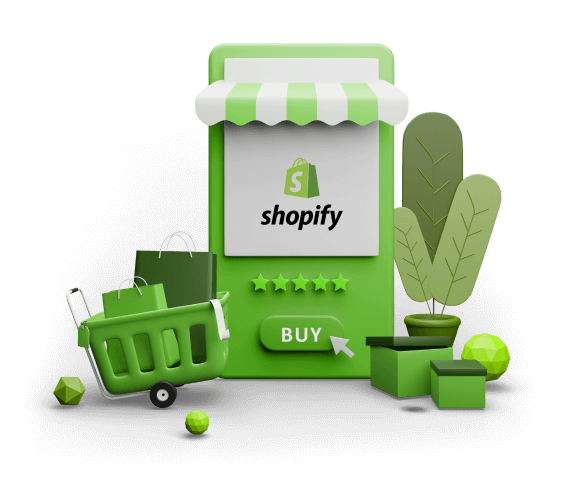Shopify Development
Introduction to Shopify Development
Shopify development refers to the process of building and customizing online stores using the Shopify platform. It includes designing the store, adding products, implementing features, and ensuring a seamless shopping experience for customers.
b. Key Features: Shopify offers a range of features, including customizable templates, secure payment options, inventory management, and a user-friendly interface for both merchants and customers.
2. Key Components of Shopify Development:
a. Themes: Shopify provides a variety of customizable themes that determine the look and feel of the online store. Developers can also create custom themes to meet specific design requirements.

b. Apps and Extensions: The Shopify App Store offers a wide range of apps and extensions that enhance the functionality of a store. Developers can create custom apps to add unique features or integrate third-party services.
c. Liquid Programming Language: Shopify uses Liquid, a template language, to build dynamic content on web pages. Developers use Liquid to create custom templates and modify the appearance of online stores.
Shopify APIs: Shopify provides APIs (Application Programming Interfaces) that allow developers to interact with store data. This enables the integration of external systems, such as CRM or ERP software, with the Shopify store.
3. Shopify Development Process:
a. Planning: Define the goals and requirements of the online store, including the target audience, product catalog, and desired features.
b. Store Setup: Create a Shopify account, choose a suitable plan, and configure basic settings such as the store name, currency, and shipping options.
c. Theme Selection or Customization: Choose a pre-built theme from the Shopify Theme Store or create a custom theme to match the brand identity and design preferences.
d. Product and Collection Setup: Add products to the store, organize them into collections, and set up product variations, prices, and inventory details.
e. Customization and Development: Customize the store’s appearance and functionality using the Shopify theme editor, or, for more advanced changes, develop custom features using HTML, CSS, JavaScript, and the Liquid templating language.
f. Testing: Thoroughly test the store’s functionality, including the shopping cart, payment processing, and any custom features, to ensure a smooth user experience.
g. Launch: Once testing is successful, launch the store to make it accessible to customers. This involves connecting a custom domain, setting up SSL, and configuring any necessary third-party integrations.
4. Benefits of Shopify Development:
a. User-Friendly: Shopify’s intuitive interface makes it easy for merchants to manage their online stores without extensive technical knowledge.
b. Scalability: Shopify can accommodate businesses of all sizes, from small startups to large enterprises, allowing for easy scalability as the business grows.
c. Security: Shopify handles security aspects such as SSL certification, ensuring a secure environment for online transactions.
d. Mobile Responsiveness: Shopify themes are designed to be mobile-responsive, providing a seamless shopping experience across various devices.
e. App Ecosystem: The Shopify App Store offers a vast array of apps and extensions, allowing merchants to add functionalities as needed.
5. Shopify Plus:
a. Enterprise Solution: Shopify Plus is designed for large-scale enterprises, offering advanced features such as custom checkout processes, automation tools, and dedicated support.
b. Customization: Shopify Plus allows for deeper customization, including access to the platform’s scripts and APIs, providing greater flexibility for development.
6. Shopify Development Best Practices:
a. Optimized Images: Ensure images are optimized for fast loading times, enhancing the overall user experience.
b. Mobile Optimization: Prioritize mobile responsiveness to cater to the increasing number of users shopping on mobile devices.
c. SEO Best Practices: Implement SEO-friendly practices, including keyword optimization, meta tags, and sitemap configuration to improve search engine visibility.
d. Regular Updates: Keep the store and any installed apps up to date with the latest versions to benefit from security patches and new features.
Conclusion: Shopify development empowers businesses to establish and grow their online presence with a user-friendly and feature-rich e-commerce platform. Whether for small businesses or large enterprises, Shopify provides a flexible and scalable solution for creating and managing online stores.
